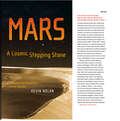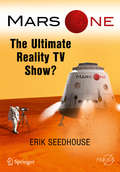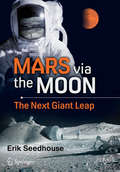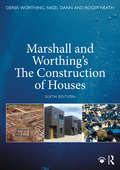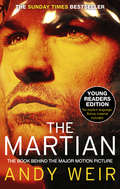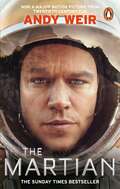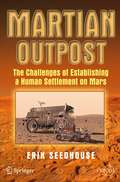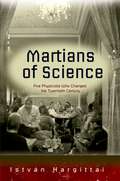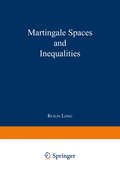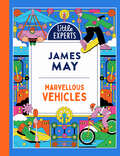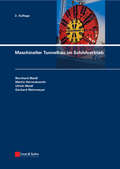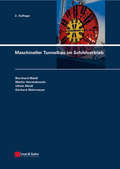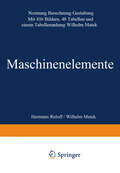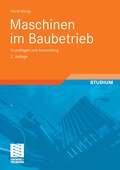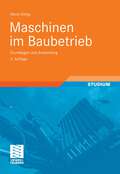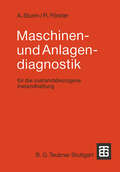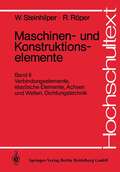- Table View
- List View
Mars, A Cosmic Stepping Stone: Uncovering Humanity's Cosmic Context
by Kevin Nolan**"Mars - A Cosmic Stepping Stone" connects ordinary people with the relevance of space exploration in a way not seen since Carl Sagan. **The book encapsulates, completely and understandibly, the 'big picture' about humanity's path to uncovering its cosmic connections and how Mars is critical to that. Few, if any books in the area have attempted to do this and achieve it, since those of Sagan. **The book presents the broadest, most complete, most up-to-date and most exciting account of humanity's fascination with, and future intentions regarding the Red Planet. **The book is built on the authors 31 years experience of astronomy and 22 years of communicating science to the public, resulting in many unique ideas and unprecedented ways of conveying them. The author is establishing a reputation in his country for this. Such an emphasis is a priority for the book - more so than conveying facts. Few currently available books approach the subject from such a stand point. **A new generation, the second generation since the start of space exploration, deserve literature that encapsulates the important issues of the subject and sets them on their own path of exploration. **The book connects with issues pertanent to todays world. In a global community full of stresses, this book unfolds a positive human story that is of direct relevance to everyone. In a world full of frivolous intrepetations and portrayed fear regarding science, the book brings to the table a grounded yet enigmatic perspective that will bestow a sense of optimism and inclusion.
Mars One: The Ultimate Reality TV Show? (Springer Praxis Books)
by Erik SeedhouseThis book dissects the hype and hubris of the Mars One venture. Every aspect of the mission design is scrutinized, from the haphazard selection process to the unproven mission architecture. A controversial project, many professional astronauts consider Mars One a reckless attempt, yet it gained popular attention.This go-to reference guide provides the reader with insights into the myriad issues arising from the project's loss of funding, loss of sponsorship, loss of TV rights. It explains what contributed to an overly optimistic assessment of Mars One's mission-specific technology, and what captivated the public and the many willing candidates despite these flaws. From the author of Survival and Sacrifice in Mars Exploration (2015) among many more books on spacefaring, this is yet another up-to-the-minute account of an emerging player in the private space market from an expert on the subject.
Mars via the Moon: The Next Giant Leap (Springer Praxis Books)
by Erik SeedhouseMOMENTUM IS BUILDING for a return to the Moon. NASA’s international partners on the International Space Station are in favor of returning to the lunar surface, as are India and China. The horizon goal may be Mars, but the political, funding and the technological and medical infeasibility of such an objective means the next logical step is a return to the Moon. While much has been learned about the Moon over the years, we don’t understand its resource wealth potential and the technologies to exploit those resources have yet to be developed, but there are a number of companies that are developing these capabilities. And, with the discovery of water in the lunar polar regions, plans are in the works to exploit these resources for fuel for transportation operations in cis-lunar space and in low Earth orbit (LEO). The time has come for commercial enterprise to lead the way back to the lunar surface. Embarking on such a venture requires little in the way of new technologies. We don’t need to develop super-fast propulsion systems like those required to get us to Mars safely, nor do we need hundreds of billions of dollars that the experts reckon it will cost to transport humans to the Red Planet. What we do need is a place to test the technologies and deep space experience that will enable us to build a pathway that will lead us to Mars. That place is the Moon and this book explains why.
Marshall and Worthing's The Construction of Houses
by Duncan Marshall Derek Worthing Nigel Dann Roger HeathThe sixth edition of The Construction of Houses builds on the success of the previous five editions. The book provides a comprehensive introduction to the principles and processes of the construction of houses and their services. As such it is aimed at providing a broad understanding of domestic building construction for students as part of their academic studies and as a useful information source for practitioners. The existing chapters have all been updated and most of them expanded to take account of changes to dwelling house construction since the last edition and there are new chapters on ‘Modern Methods of Construction’ and ‘Regulatory controls and building standards’. Additionally, many new and/or updated photographs and diagrams have been added. As with the previous editions, the authors have concentrated on presenting current mainstream approaches to the construction of houses. The detailed, yet accessible, text that is supported by hundreds of coloured photographs and diagrams provides clear explanations of the many complex processes that go into the building of a house. A deeper insight into modern construction is also given by the book’s consideration of historical building techniques from the 18th century onwards in order to illustrate how and why we build houses in the way we do now.
Marshall and Worthing's The Construction of Houses
by Duncan Marshall Derek Worthing Nigel Dann Roger HeathThe sixth edition of The Construction of Houses builds on the success of the previous five editions. The book provides a comprehensive introduction to the principles and processes of the construction of houses and their services. As such it is aimed at providing a broad understanding of domestic building construction for students as part of their academic studies and as a useful information source for practitioners. The existing chapters have all been updated and most of them expanded to take account of changes to dwelling house construction since the last edition and there are new chapters on ‘Modern Methods of Construction’ and ‘Regulatory controls and building standards’. Additionally, many new and/or updated photographs and diagrams have been added. As with the previous editions, the authors have concentrated on presenting current mainstream approaches to the construction of houses. The detailed, yet accessible, text that is supported by hundreds of coloured photographs and diagrams provides clear explanations of the many complex processes that go into the building of a house. A deeper insight into modern construction is also given by the book’s consideration of historical building techniques from the 18th century onwards in order to illustrate how and why we build houses in the way we do now.
The Martian: Young Readers Edition
by Andy WeirIn the Young Readers Edition of The Martian: Classroom-appropriate languageDiscussion questions and activitiesQ&A with Andy Weir Six days ago, astronaut Mark Watney became one of the first people to walk on Mars. Now, he's sure he'll be the first person to die there. After a dust storm nearly kills him and forces his crew to evacuate while thinking him dead, Mark finds himself stranded and completely alone with no way to even signal Earth that he’s alive – and even if he could get word out, his supplies would be gone long before a rescue could arrive. Chances are, though, he won't have time to starve to death. Damaged machinery, the unforgiving environment, or plain old "human error" are much more likely to kill him first. But Mark isn't ready to give up yet. Drawing on his ingenuity, his engineering skills and a relentless, dogged refusal to quit, he steadfastly confronts one seemingly insurmountable obstacle after the next. Will his resourcefulness be enough to overcome the impossible odds against him?
The Martian: Young Readers Edition
by Andy WeirIn the Young Readers Edition of The Martian: Classroom-appropriate languageDiscussion questions and activitiesQ&A with Andy Weir Six days ago, astronaut Mark Watney became one of the first people to walk on Mars. Now, he's sure he'll be the first person to die there. After a dust storm nearly kills him and forces his crew to evacuate while thinking him dead, Mark finds himself stranded and completely alone with no way to even signal Earth that he’s alive – and even if he could get word out, his supplies would be gone long before a rescue could arrive. Chances are, though, he won't have time to starve to death. Damaged machinery, the unforgiving environment, or plain old "human error" are much more likely to kill him first. But Mark isn't ready to give up yet. Drawing on his ingenuity, his engineering skills and a relentless, dogged refusal to quit, he steadfastly confronts one seemingly insurmountable obstacle after the next. Will his resourcefulness be enough to overcome the impossible odds against him?
Martian Outpost: The Challenges of Establishing a Human Settlement on Mars (Springer Praxis Books)
by Erik SeedhouseMars Outpost provides a detailed insight into the various technologies, mission architectures, medical requirements, and training needed to send humans to Mars. It focuses on mission objectives and benefits, and the risks and complexities that are compounded when linked to an overall planet exploration program involving several expeditions and setting up a permanent presence on the surface. The first section provides the background to sending a human mission to Mars. Analogies are made with early polar exploration and the expeditions of Shackleton, Amundsen, and Mawson. The interplanetary plans of the European Space Agency, NASA, and Russia are examined, including the possibility of one or more nations joining forces to send humans to Mars. Current mission architectures, such as NASA’s Constellation, ESA’s Aurora, and Ross Tierney’s DIRECT, are described and evaluated. The next section looks at how humans will get to the Red Planet, beginning with the preparation of the crew. The author examines the various analogues to understand the problems Mars-bound astronauts will face. Additional chapters describe the transportation hardware necessary to launch 4-6 astronauts on an interplanetary trajectory to Mars, including the cutting edge engineering and design of life support systems required to protect crews for more than a year from the lethal radiation encountered in deep space. NASA’s current plan is to use standard chemical propulsion technology, but eventually Mars crews will take advantage of advanced propulsion concepts, such as the Variable Specific Impulse Magnetoplasma Rocket, ion drives and nuclear propulsion. The interplanetary options for reaching Mars, as well as the major propulsive maneuvers required and the trajectories and energy requirements for manned and unmanned payloads, are reviewed . Another chapter addresses the daunting medical problems and available countermeasures for humans embarking on a mission to Mars: the insidious effects of radiation on the human body and the deleterious consequences of bone and muscle deconditioning. Crew selection will be considered, bearing in mind the strong possibility that they may not be able to return to Earth. Still another chapter describes the guidance, navigation, and control system architecture, as well as the lander design requirements and crew tasks and responsibilities required to touch down on the Red Planet. Section 3 looks at the surface mission architectures. Seedhouse describes such problems as radiation, extreme temperatures, and construction challenges that will be encountered by colonists. He examines proposed concepts for transporting cargo and astronauts long distances across the Martian surface using magnetic levitation systems, permanent rail systems, and flying vehicles. In the penultimate chapter of the book, the author explains an adaptable and mobile exploration architecture that will enable long-term human exploration of Mars, perhaps making it the next space-based tourist location.
Martians of Science: Five Physicists Who Changed the Twentieth Century
by Istvan HargittaiIf science has the equivalent of a Bloomsbury group, it is the five men born at the turn of the twentieth century in Budapest: Theodore von Kármán, Leo Szilard, Eugene Wigner, John von Neumann, and Edward Teller. From Hungary to Germany to the United States, they remained friends and continued to work together and influence each other throughout their lives. As a result, their work was integral to some of the most important scientific and political developments of the twentieth century. István Hargittai tells the story of this remarkable group: Wigner won a Nobel Prize in theoretical physics; Szilard was the first to see that a chain reaction based on neutrons was possible, initiated the Manhattan Project, but left physics to try to restrict nuclear arms; von Neumann could solve difficult problems in his head and developed the modern computer for more complex problems; von Kármán became the first director of NASA's Jet Propulsion Laboratory, providing the scientific basis for the U.S. Air Force; and Teller was the father of the hydrogen bomb, whose name is now synonymous with the controversial "Star Wars" initiative of the 1980s. Each was fiercely opinionated, politically active, and fought against all forms of totalitarianism. Hargittai, as a young Hungarian physical chemist, was able to get to know some of these great men in their later years, and the depth of information and human interest in The Martians of Science is the result of his personal relationships with the subjects, their families, and their contemporaries.
The Martians of Science: Five Physicists Who Changed the Twentieth Century
by Istvan HargittaiIf science has the equivalent of a Bloomsbury group, it is the five men born at the turn of the twentieth century in Budapest: Theodore von Kármán, Leo Szilard, Eugene Wigner, John von Neumann, and Edward Teller. From Hungary to Germany to the United States, they remained friends and continued to work together and influence each other throughout their lives. As a result, their work was integral to some of the most important scientific and political developments of the twentieth century. István Hargittai tells the story of this remarkable group: Wigner won a Nobel Prize in theoretical physics; Szilard was the first to see that a chain reaction based on neutrons was possible, initiated the Manhattan Project, but left physics to try to restrict nuclear arms; von Neumann could solve difficult problems in his head and developed the modern computer for more complex problems; von Kármán became the first director of NASA's Jet Propulsion Laboratory, providing the scientific basis for the U.S. Air Force; and Teller was the father of the hydrogen bomb, whose name is now synonymous with the controversial "Star Wars" initiative of the 1980s. Each was fiercely opinionated, politically active, and fought against all forms of totalitarianism. Hargittai, as a young Hungarian physical chemist, was able to get to know some of these great men in their later years, and the depth of information and human interest in The Martians of Science is the result of his personal relationships with the subjects, their families, and their contemporaries.
Martingale Spaces and Inequalities
by Ruilin LongThis book gives a systematic introduction to the theory of martingale spaces and inequalities. Except those mainly concerned with the martingale Hp, p>1, most parts of the book reflect the developments in the field in the past twenty years. The material is self-contained, only a familiarity with basic analysis is required. Both graduate students and mathematicians who want to know about the interaction between analysis and probability will find this book to be a valuable reference and text.Das Buch gibt eine systematische Einführung in die Martingaltheorie und ihre Beziehungen zur Analysis. Der größte Teil des Buches beschreibt die Entwicklungen der letzten 20 Jahre.
Marvellous Vehicles (Little Experts #3)
by James MayMad about marvellous vehicles? Hit the road with writer and broadcaster JAMES MAY to discover incredible human-powered vehicles – from bicycles and submarines to amphibious vehicles and even a helicopter. Yes, really!
Maschineller Tunnelbau im Schildvortrieb
by Bernhard Maidl Martin Herrenknecht Ulrich Maidl Gerhard WehrmeyerDas Buch stellt den neuesten Stand der Technik des maschinellen Schildvortriebes und die unterschiedlichen Maschinenarten vor und gibt Berechnungsansätze und Konstruktionshinweise. Weitere Kapitel befassen sich mit den Abbauwerkzeugen, den Fördereinrichtungen, der Tunnelsicherung, der Vermessung und Steuerung sowie der Arbeitssicherheit. Ferner wird ausführlich auf die vertraglichen Aspekte und das Prozess-Controlling eingegangen.
Maschineller Tunnelbau im Schildvortrieb
by Bernhard Maidl Martin Herrenknecht Ulrich Maidl Gerhard WehrmeyerDas Buch stellt den neuesten Stand der Technik des maschinellen Schildvortriebes und die unterschiedlichen Maschinenarten vor und gibt Berechnungsansätze und Konstruktionshinweise. Weitere Kapitel befassen sich mit den Abbauwerkzeugen, den Fördereinrichtungen, der Tunnelsicherung, der Vermessung und Steuerung sowie der Arbeitssicherheit. Ferner wird ausführlich auf die vertraglichen Aspekte und das Prozess-Controlling eingegangen.
Maschinen im Baubetrieb: Grundlagen und Anwendung (Leitfaden des Baubetriebs und der Bauwirtschaft)
by Horst KönigWenn Bauaufgaben komplexer und menschliche Arbeitskraft teurer werden, spielen Maschinen im Baubetrieb eine immer wichtigere Rolle. Die richtige Auswahl und Anwendung für die Lösung technischer Probleme und den wirtschaftlichen Erfolg einer Baustelle sind deshalb von entscheidender Bedeutung."Baumaschinen" bietet dazu eine hervorragende Hilfestellung und gibt einen Überblick zu den wichtigsten Baumaschinen und deren Einsatzmöglichkeiten.Neu in der 4. Auflage: Erweiterung des Abschnitts "Zusatzgeräte für Hydraulikbagger", Neuaufnahme von Anbau-Vibrationsplatten für die Erdverdichtung im Kapitel Geräte für die Bodenverdichtung. Neuaufnahme des Abschnitts "Rohrschiebeeinrichtungen mit hydraulischen Rohrpressen zur Unterquerung von Flüssen und Bauwerken" im Kapitel Geräte für den Kanalbau, Rohrvortrieb und Rohrleitungsbau.
Maschinen im Baubetrieb: Grundlagen und Anwendung (Leitfaden des Baubetriebs und der Bauwirtschaft)
by Horst KönigWenn Bauaufgaben komplexer und menschliche Arbeitskraft teurer werden, spielen Maschinen im Baubetrieb eine immer wichtigere Rolle. Die richtige Auswahl und Anwendung für die Lösung technischer Probleme und den wirtschaftlichen Erfolg einer Baustelle sind deshalb von entscheidender Bedeutung. Das Buch ist dazu eine hervorragende Hilfestellung und gibt einen Überblick zu den wichtigsten Baumaschinen und deren Einsatzmöglichkeiten im Hoch-, Tief- und Straßenbau. Wer bei Angebotsbearbeitung, Baustelleneinrichtung oder Ausführung Baumaschinen einsetzen muss, findet hier echte Alternativen für Entscheidungen mit Erfolg. Die zweite Auflage wurde vom Autor durchgehend aktualisiert und um Betonglättmaschinen und Muldenkipper erweitert.
Maschinen im Baubetrieb: Grundlagen und Anwendung (Leitfaden des Baubetriebs und der Bauwirtschaft)
by Horst KönigWenn Bauaufgaben komplexer und menschliche Arbeitskraft teurer werden, spielen Maschinen im Baubetrieb eine immer wichtigere Rolle. Die richtige Auswahl und Anwendung für die Lösung technischer Probleme und den wirtschaftlichen Erfolg einer Baustelle sind deshalb von entscheidender Bedeutung. Das Buch ist dazu eine hervorragende Hilfestellung und gibt einen Überblick zu den wichtigsten Baumaschinen und deren Einsatzmöglichkeiten im Hoch-, Tief- und Straßenbau. Wer bei Angebotsbearbeitung, Baustelleneinrichtung oder Ausführung Baumaschinen einsetzen muss, findet hier echte Alternativen für Entscheidungen mit Erfolg.
Maschinen- und Anlagendiagnostik: Für die zustandsbezogene Instandhaltung
by Adolf Sturm Rudolf FörsterMaschinen- und Konstruktionselemente: Verbindungselemente, elastische Elemente, Achsen und Wellen, Dichtungstechnik (Hochschultext)
by Waldemar Steinhilper Rudolf RoeperMaschinen- und Konstruktionselemente: Band 1: Grundlagen der Berechnung und Gestaltung (Springer-Lehrbuch)
by Waldemar Steinhilper Rudolf RöperMaschinen- und Konstruktionselemente: Band 1: Grundlagen der Berechnung und Gestaltung (Hochschultext)
by Waldemar Steinhilper Rudolf RöperAus den Besprechungen: "Mit dem ersten Band tragen die Verfasser die allen Maschinen- und Konstruktionselementen gemeinsamen Grundlagen aus den Bereichen Normung, Festigkeitsberechnung und Gestaltung zusammen. Sie wollen damit ausdrücklich kein Rezeptbuch vorlegen...." "... läßt sich für diesen Band sagen, daß er sich als Lehrbuch zur ergänzenden Studium in allen Hochschulbereichen des Maschinenbaus, aber auch zum Selbststudium gut eignet. Kennzeichnend dafür sind der streng systematische Aufbau und die angefügten Anwendungsbeispiele. Ein reichhaltiges Literaturverzeichnis ermöglicht es jedem, der sich eingehender mit einem Spezialgebiet beschäftigen muß die dafür maßgebende Quelle zu finden ...." Die Neue Hochschule#1 " ... erleichtern die Autoren dem Anfänger das Verständnis für die wesentlichen Merkmale und Systematik höherer technischer Strukturen und stellen gleichzeitig die Verbindung zum methodischen Konstruieren her ..." Bänder Bleche Rohre#2
